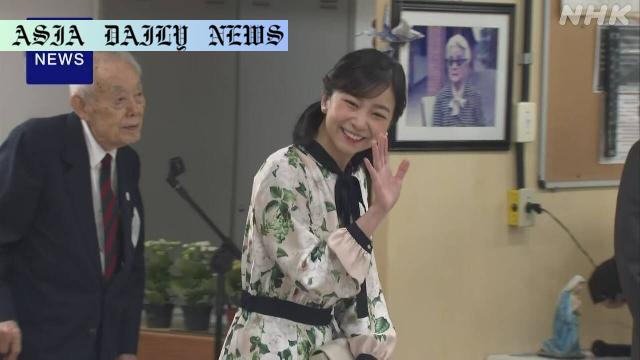Princess Kako: Japan’s royal meets elderly Japanese descendants in Brazil during a heartfelt visit to foster cultural bonds.
Princess Kako visited an elderly care center in Brazil, which houses notable Japanese descendants.
She met individuals over 90 years old, fostering emotional ties and cultural appreciation.
The visit highlights Brazil’s strong Japanese diaspora, showcasing cross-cultural connections.

Princess Kako’s Significant Role in Strengthening Cross-Cultural Bonds
Japan’s Princess Kako, the second daughter of Crown Prince and Princess Akishino, recently embarked on a significant journey to Brazil. As part of her official visit, she dedicated her time to meeting elderly residents of Japanese descent who currently reside in elderly care facilities near Sao Paulo. Her heartfelt gestures and the warm reception she received resonated deeply within the community, showcasing the enduring cultural ties between Japan and Brazil. Brazil is home to the largest expatriate Japanese community in the world, totaling millions of descendants who have preserved their cultural heritage since their forebears emigrated in the early 20th century.
During her visit, the princess toured an elderly care facility founded in 1958 that currently houses around 60 individuals, many of whom are over a century old. The facility stands as a testament to the effort to care for the aging population of Japanese-Brazilians and to preserve their long-standing traditions. Among these individuals, Princess Kako shared meaningful moments with Yuasa Tisue, a 92-year-old second-generation Japanese-Brazilian, and Kumada Koki, a 93-year-old who shared his cherished memories of working at a coffee farm in Sao Paulo. The princess’s interaction was filled with warmth, including handshakes, greetings, and heartfelt words of hope, leaving an unforgettable impression on the community.
The Cultural Significance of the Princess’s Visit
Princess Kako’s visit not only symbolized respect and care for the elderly community but also underscored the importance of preserving cultural heritage across generations. The Japanese diaspora in Brazil represents rich traditions integrated into Brazilian society over decades. The residents, many of whom maintain fluency in Japanese and celebrate traditional customs, are enduring links between their ancestral homeland and their adopted country. By meeting them personally, the princess emphasized the Japanese monarchy’s acknowledgment of the global bonds shared with the diaspora. This visit also highlighted the compassion and outreach of the Japanese royal family as a vital bridging component between citizens, their ancestry, and future generations.
More notably, the princess’s journey reflects Japan’s effort to foster long-term, cross-border ties by placing personal significance on cultural exchange. This becomes imperative given Brazil’s role as a melting pot of Japanese traditions within a broader Latin American setting. Visits such as these inspire pride among Japanese descendants while nurturing their broader social identity as a community connected to both Japan and Brazil.
Continuing Legacy and Community Solidarity
Princess Kako’s interaction within the Japanese-Brazilian community has immense institutional and emotional value. Her visit reinforces the importance of acknowledging and celebrating cultural ties that have spanned decades, especially as the community ages and its direct connection to Japan’s history naturally wanes. This emotional exchange serves as a bridge for future engagement between the two countries.
Looking ahead, Princess Kako’s ongoing itinerary includes traveling to Maringa in Parana, another region known for housing a robust Japanese-Brazilian population. By continuing this tradition of cultural acknowledgment, Japan fortifies its engagement with Japanese descendants worldwide, fostering a community spirit that benefits diplomacy and celebrates heritage simultaneously. It is a profound reminder of the unifying power of mutual respect and shared history, especially when it spans generations.
Commentary
A Heartfelt Tribute to Cultural Bridges
Princess Kako’s recent visit to Brazil represents a beautiful gesture of mutual acknowledgment and cultural appreciation. In a world where individual connections cross borders and span cultures, her actions emphasize the importance of valuing one’s roots while building modern global relationships. This visit serves as a palpable reminder of the human aspect of diplomacy, where care, kindness, and familial heritage bind countries together.
A Personal Take on the Role of Tradition
Reading about Princess Kako’s interactions with elderly Japanese-Brazilians is a humbling experience. These individuals, many of whom have lived over nine decades, embody the resilience and cultural tenacity of immigrants and their descendants. Their stories reflect the sacrifices made in search of better lives while preserving traditions that deeply resonate across generations. The princess’s role here extends beyond formality, as her expressions of warmth and care breathe life into long-standing values of respect and connection.
Reflecting on the Importance of Inclusion
The importance of this visit cannot be overstated. It highlights the evolving role of monarchy in connecting people deeply and meaningfully. Princess Kako symbolizes a brighter narrative of cultural inclusivity and historical preservation. Her willingness to travel far distances to forge personal connections with a community rich in tradition reminds us of how valuable personal interactions can be in bridging cultural gaps.
In today’s increasingly globalized world, such moments hold immense diplomatic significance. They teach us the value of respect, resilience, and the enduring power of tradition in maintaining our bonds with those who may be far removed from their origins geographically but remain culturally close at heart.


